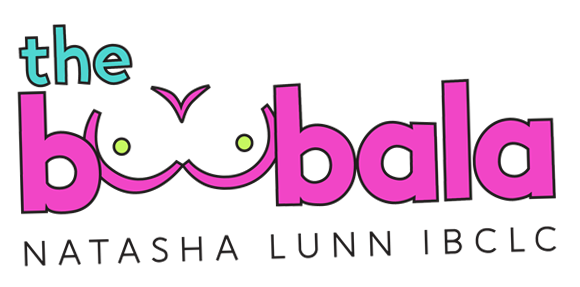Page Content
- What are the side effects of stopping breastfeeding?
- How long after stopping breastfeeding will my breasts return to normal?
- What are the weird symptoms after stopping breastfeeding?
- How long does it take for breastmilk to dry up if not breastfeeding?
- Why do I still have milk in my breast after 6 years?
- Can breast milk come back after drying up after 2 years?
- How to tell when breast milk is drying up?
- What dries up breast milk fast?
- Do you gain weight when you stop breastfeeding?
- How to tell if breast milk is drying up?
Understanding the Timeline for Breast Milk Drying Up
The journey of breastfeeding is a deeply personal and often emotional experience for many mothers. As they navigate this path, a common question arises: How long does it take for breast milk to dry up? The answer, while straightforward, varies significantly from one individual to another.
Factors Influencing Milk Cessation
The timeline for breast milk drying up can range from several weeks to several months. This variability is influenced by several factors, including the mother’s overall health, the frequency of breastfeeding or pumping, and the method of weaning. For some women, the process may be relatively quick, taking just a few days, especially if they abruptly stop breastfeeding. However, for others, it can extend over several weeks or even months, with some mothers experiencing residual let-down sensations or leaking long after they have ceased breastfeeding.
The Weaning Process
Experts often recommend a gradual approach to weaning, which can help ease the transition for both mother and baby. Gradually reducing breastfeeding sessions allows the body to adjust and can lead to a more comfortable drying-up process. This method not only minimizes discomfort but also helps in regulating hormone levels, which can affect milk production.
Emotional and Physical Considerations
The emotional aspect of weaning and the cessation of milk production cannot be overlooked. For many mothers, this marks the end of a significant chapter in their lives. The decision to stop breastfeeding can be driven by various factors, including the baby’s age, the mother’s return to work, or personal health considerations.
Moreover, some mothers may find that their milk supply does not completely dry up even after they have stopped breastfeeding. This lingering production can be frustrating and may require additional measures, such as herbal remedies or medications, to assist in the drying-up process.
Conclusion
In summary, the timeline for breast milk to dry up is not a one-size-fits-all scenario. While it typically takes several weeks to months, individual experiences will vary based on personal circumstances and choices. Mothers are encouraged to consult with healthcare professionals to find the best approach for their unique situations, ensuring a smooth transition for both themselves and their babies.
What are the side effects of stopping breastfeeding?
Some might experience headaches or migraines, while others feel exhausted or even dizzy immediately after weaning. Another common post-weaning issue? Acne. Big hormone changes can really throw your body for a loop.
How long after stopping breastfeeding will my breasts return to normal?
Breast Shape
The size of the breasts will likely return to your pre-pregnancy size but may look quite different. The fatty part of your breast will come back over time to make the breasts look fuller and plumper again. This can take 6 months to a few years.
What are the weird symptoms after stopping breastfeeding?
Other Strange Body Ailments Can Happen
Some might experience headaches or migraines, while others feel exhausted or even dizzy immediately after weaning. Another common post-weaning issue? Acne. Big hormone changes can really throw your body for a loop.
How long does it take for breastmilk to dry up if not breastfeeding?
It may take several days or weeks for your breasts to completely stop making milk. Breast fullness should decrease in 1-3 days. You may feel emotional during this time. Be sure to take care of yourself.
Why do I still have milk in my breast after 6 years?
This is called idiopathic galactorrhea. It may mean that your breast tissue is particularly sensitive to the milk-producing hormone prolactin in your blood. If you have increased sensitivity to prolactin, even normal prolactin levels can lead to galactorrhea.
Can breast milk come back after drying up after 2 years?
It’s possible to relactate if you haven’t produced breast milk in weeks, months, years — or ever. And while some may think relactation is a modern concept, the practice has been around for hundreds of years.
How to tell when breast milk is drying up?
If your milk supply is decreasing, you’ll notice:
- Your baby stops gaining or begins to lose weight. Younger babies will gain between 1.5 and 2 pounds each month.
- Your baby is showing signs of dehydration.
- Your baby is fussy or lethargic and struggling to stay awake while breastfeeding.
What dries up breast milk fast?
Drink one mug of sage or peppermint tea 3 or 4 times per day, for 2 to 3 days. Pseudoephedrine (Sudafed) can help dry up your milk, but ask your doctor before using this medicine, and do not take it if you have kidney or thyroid problems, or if you have glaucoma. Take Benadryl as directed on the package.
Do you gain weight when you stop breastfeeding?
Thanks to biological and behavioral changes, it’s totally normal to gain weight when you stop breastfeeding. “It’s really common that women will stop breastfeeding and their weight goes up,” G. Thomas Ruiz, M.D., an ob/gyn at MemorialCare Orange Coast Medical Center in Fountain Valley, California, tells SELF.
How to tell if breast milk is drying up?
The following are signs your baby isn’t getting enough milk:
- Poor weight gain. It’s normal for newborns to lose 5% to 7% of their birth weight in the first few days – some lose up to 10%.
- Insufficient, wet or dirty nappies.
- Dehydration.

